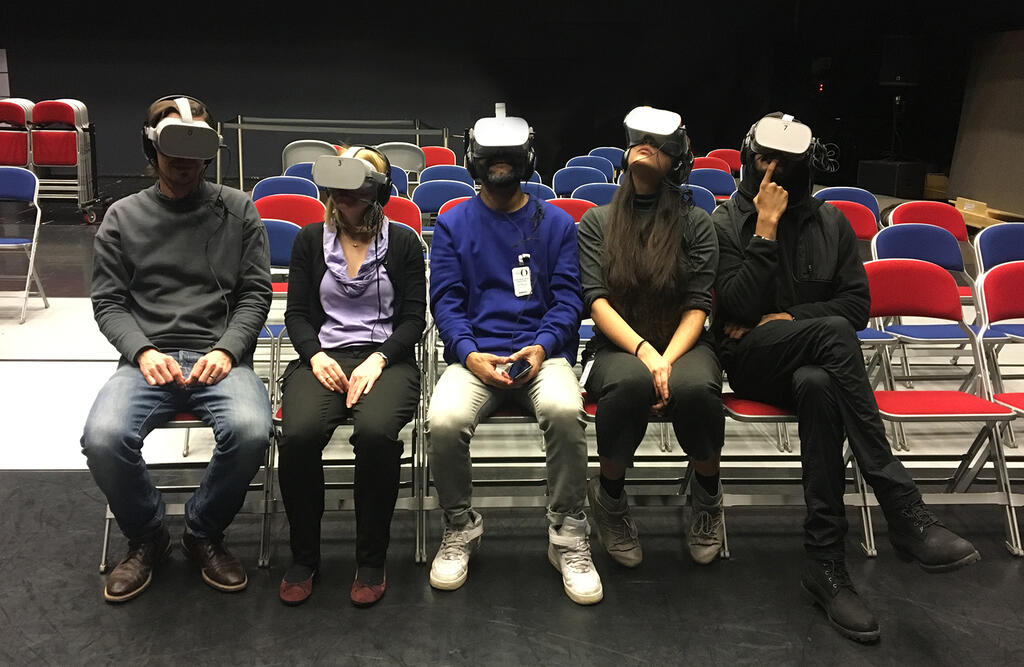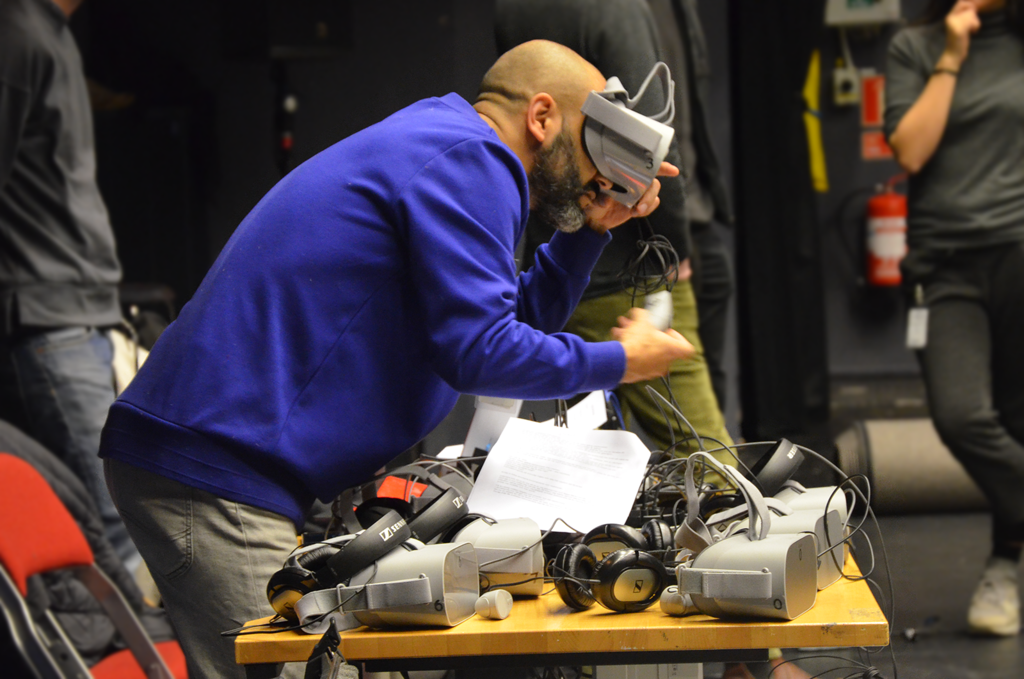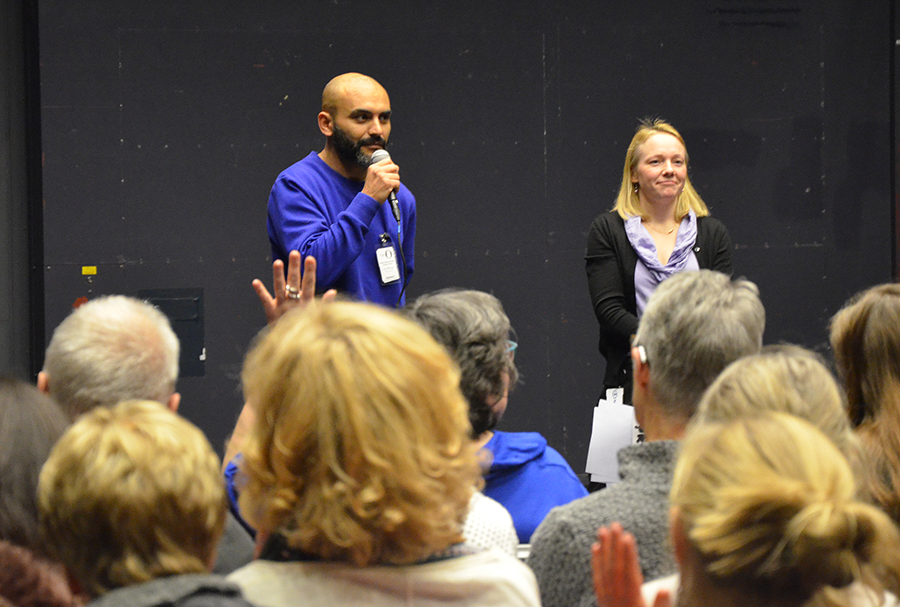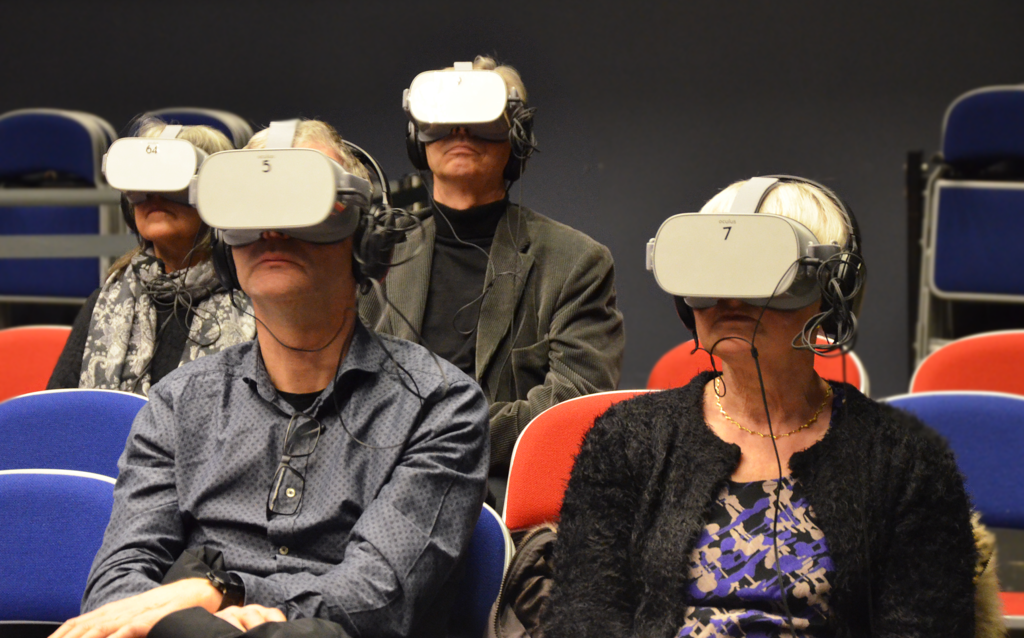Shared VR experience is tested at the Gothenburg Opera
How can a joint film experience be shared in VR? That is what Visual Arena wants is attempting to find out in the project The Future Cinema, which is operated in collaboration with Aftonstjärnan cinema. The purpose is to investigate how the very best parts of the cinema experience - getting together - can be combined with the very best parts of virtual reality - being surrounded by the film - and to investigate how the possibilities of digitalisation can be utilised and develop the cinema culture.

In order to really test this, the audience of the Gothenburg Opera's presentation Skid & Decadance Gothenburg had the opportunity to try something entirely new: a shared virtual reality experience of Damien Jalet's dance piece. More than 160 people from the audience had the opportunity to experience dance through VR glasses during the exhibitions.
As though they sat on Skid's tilting dance floor, they could see the dancers glide past them and choose the camera frame themselves. The five-minute film from the dance piece with the Gothenburg Opera's Dance Company is filmed with a 180-degree camera.
'We have been able to assimilate VR experiences before, but what is new is the synchronised, collective viewing – that everyone assimilates the same VR experience. Just like in a theatre or cinema, where the audience experiences the piece together, are affected and laugh at the same parts,' explains Gorki Glaser-Müller, Project Manager for the Future Cinema project.
New Challenges with VR Viewings
The synchronised VR technology provides great possibilities, which also involves entirely new challenges in terms of technical equipment and in communication with the audience. During the viewings with 10 people at a time in synchronised viewings, it was possible not only to know more about how the audience experienced the piece, but also to test practical challenges; how headsets are removed and put on, how those who have had problems are helped and how the viewing can be built up in terms of the environment.
'From a purely technical perspective, the challenge is that there are many units. In a VR cinema, all glasses must work simultaneously. If you have 100, you have many potential problems. This places high demands on the technical level of the equipment, which is also expensive. The glasses must have adequately high resolution and a stable operating system that also permits remote control and a battery time of more than two hours are required, explains Gorki.
'Right now, most people are still entirely unfamiliar with VR glasses and VR experiences. You can compare it to giving smart phones to a group that has only had mobile phones with buttons. It is a major leap to understand how it works and what you can expect. The audience host has a key role in teaching and foreseeing and actively helping the audience during the viewing.
Monitoring the equipment and the audience reactions the entire time was an important part of the work under test viewings.'The questionnaires that we asked participants to answer showed that the audience was very positive and can foresee paying for a professional cultural experience in VR. However, we have also learned that VR must be treated as its own medium in order to have the best possible effect with the audience. VR is a new MEDIUM which requires its own content. It is new a new viewing window for the same content,' continues Gorki.
The Gothenburg Opera sees the possibilities with shared VR
The collaboration with the Gothenburg Opera Dance Company began over a year ago and, for Artistic Director Katrín Hall, there were several reasons for the Company to participate in the project.
'We are always looking for new, innovative ways to develop, share and present our art. We always strive to create experiences that surprise our audience. This project is an exploratory journey and a meeting between creative forces within entirely different fields. Thus far, it has been an experiment with this technology. No one knows where the journey will take us, says Katrín Hall.
'As far as we are aware, the Gothenburg Opera is the first cultural organisation that offers this type of collective VR experience in Sweden. Until only a few years ago, this type of viewing was not technically possible, explains Gorki.
The VR viewing introduced by Gorki-Glaser Müller, Project Manager for the project The Future Cinema, together with Anna Karlander, Coordinator of SKAPA Dance, from the Gothenburg OperaWill future cinemas be in VR?
'The new technology will not replace regular cinemas, because it will become an additional medium. The institutions and companies that offer it will offer something unique, says Gorki.
'It will take some time until before content is produced, for example, by Hollywood. And when they begin to produce, there will be a viewing platform. The project with The Future Cinema is intended to provide regional cultural life an opportunity to test for the future. Aftontjärnan Cinema is already planning shared VR viewings this winter, so we are ahead of the curve!' continues Gorki.
The Future Cinema is a pilot project operated by Visual Arena together with Aftontjärnan Cinema. With this project, we want to investigate how the possibilities of digitalisation can utilise and develop cinema culture and study an innovative organiser model for viewing of new digital experiences. The project is financed by Region Västra Götaland.



